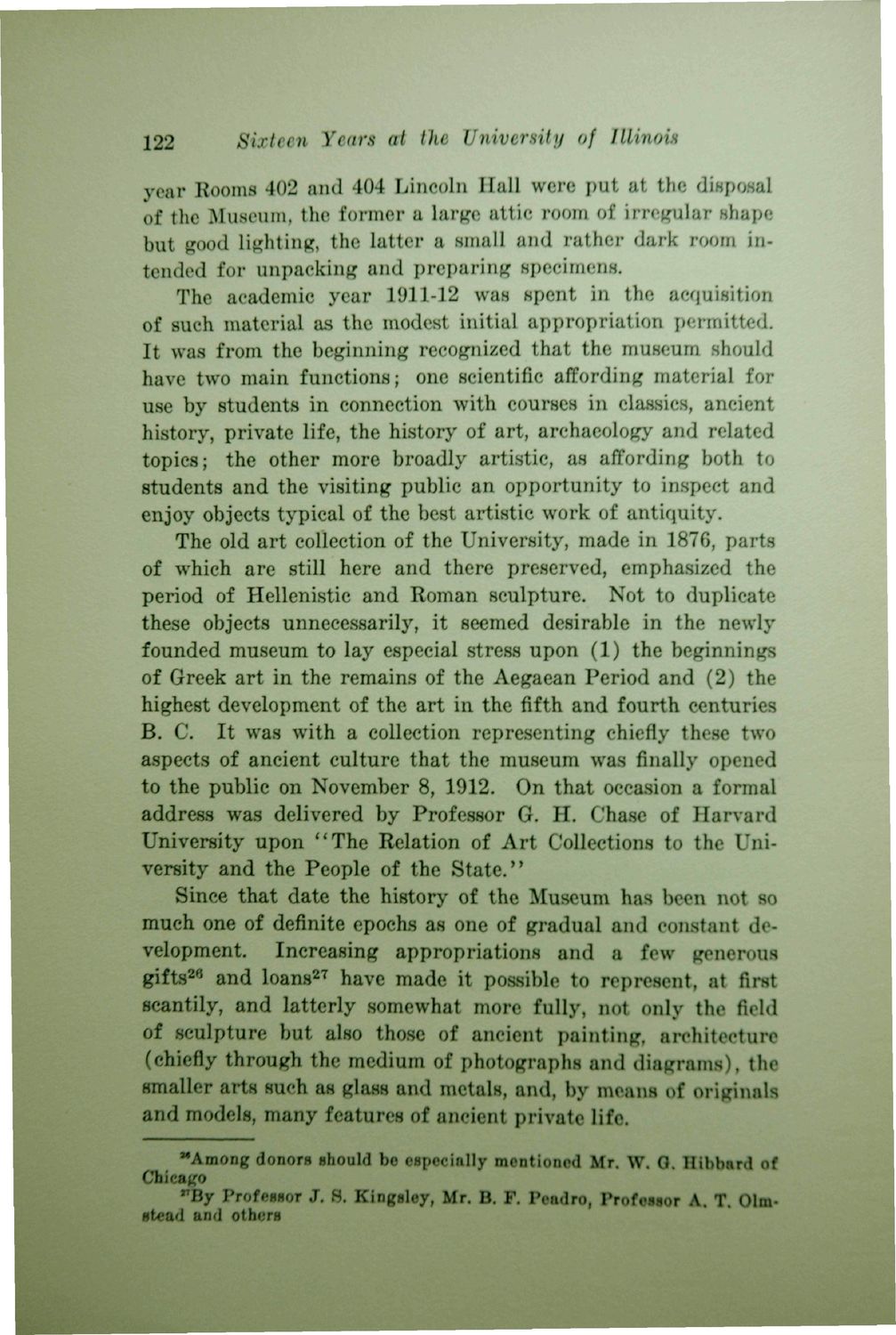| |
| |
Caption: Book - 16 Years (Edmund James)
This is a reduced-resolution page image for fast online browsing.

EXTRACTED TEXT FROM PAGE:
122 Sixteen Years at the University of Illinois year Rooms 402 and 404 Lincoln Hall were put at the disposal of the Museum, the former a large attic room of irregular shape but good lighting, the latter a small and rather dark room intended for unpacking and preparing specimens. The academic year 1911-12 was spent in the acquisition of such material as the modest initial appropriation permitted. It was from the beginning recognized that the museum should have two main functions; one scientific affording material for use by students in connection with courses in classics, ancient history, private life, the history of art, archaeology and related topics; the other more broadly artistic, as affording both to students and the visiting public an opportunity to inspect and enjoy objects typical of the best artistic work of antiquity. The old art collection of the University, made in 1876, parts of which are still here and there preserved, emphasized the period of Hellenistic and Roman sculpture. Not to duplicate these objects unnecessarily, it seemed desirable in the newly founded museum to lay especial stress upon (1) the beginnings of Greek art in the remains of the Aegaean Period and (2) the highest development of the art in the fifth and fourth centuries B. C. It was with a collection representing chiefly these two aspects of ancient culture that the museum was finally opened to the public on November 8, 1912. On that occasion a formal address was delivered by Professor G. H. Chase of Harvard University upon "The Relation of Art Collections to the University and the People of the State." Since that date the history of the Museum has been not so much one of definite epochs as one of gradual and constant development. Increasing appropriations and a few generous gifts26 and loans27 have made it possible to represent, at first scantily, and latterly somewhat more fully, not only the field of sculpture but also those of ancient painting, architecture (chiefly through the medium of photographs and diagrams), the smaller arts such as glass and metals, and, by means of originals and models, many features of ancient private life. "•Among donors should be especially mentioned Mr. W. O. Hibbnrd of Chicago "By Professor J. 8. Kingaley, Mr, B. F. Peadro, Professor A. T. Olmstead and others
| |